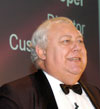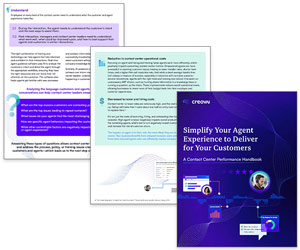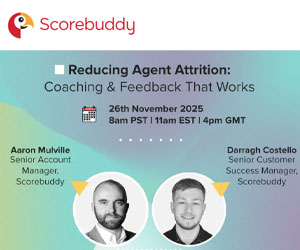In the last few years there have been many attempts to put the customer at the heart of everything we do. As I’m sure you know, it is called the customer-centric approach.
Paul Cooper identifies a few ways to check how customer centric your organisation really is.
Customer centricity is of course just another blindingly obvious thing that excellent organisations tend to do naturally, while the not-so-good tend to put into mission statements, reports and directives to staff and not actually do anything about implementing.
Most companies are process centric
From my observations, the problem with the current view of customer centricity is that most organisations actually believe that they are already quite customer focused. In fact, many are still very product/process centric and the company is internally facing and geared around its own needs, gaining information for its own ends, making things easier for them not the “customer”.
The challenge is to change management thinking towards a customer-centric position and, just as importantly, to realise that this will be a major culture change for you and will include your processes, your technology and your people – who may not yet be ready for it.
Pseudo-intellectual mumbo-jumbo
When you do some digging on the subject, you rapidly run into so much technical, pseudo-intellectual mumbo-jumbo that there is a danger of just giving up, assuming you’ve got it anyway and moving on to the next impossible challenge. Such is life in any organisation today. A bad move!
Now, don’t get me wrong. I’m a big fan of customer centricity, and strongly recommend it to you all. And I’m not alone either. Here are just two eminent commentators –
“The challenge to business is to become customer–centric and not product–centric” – Cranfield Business College
“Organisations have to be refocused around the needs of the customer, rather than the problems of those who provide the service” – OPSR.
So there you have it. Yes, I know it’s what corner shops have done for a hundred years or they’d lose their customers, and in different guises it is a message that has been constant when one talks about true customer service excellence, but what does it look like?
The litmus test
I was asked this at a conference recently, where I was speaking on this very subject. I used a test example. Suppose you were on the phone, or doing something for a customer or potential customer and the boss contacted you for something really important. True customer centricity is having the confidence to tell the boss to go away and wait. This got a pause, followed by silence, followed by – “well, I think we may have a bit of a way to go yet then!”
But isn’t that just the point?
Phone your own call centre
There are so many ways to test whether it’s really there. Just try telephoning your own organisation, especially its call centre, and hear what is being said to people; try to get through the maze and complexity of your own telephony; force your staff to have to use the same systems as your customers; realise that in many organisations, like local authorities, your staff are also your customers and learn from this, and much more.
Rocket science?
The rocket science stuff may well be important eventually, but a dose of back-to-basics is needed first. Until one is confident that these are right, the rest just clutter up the agenda.

Paul Cooper
Another example – I have helped with judging several of the major customer service and call centre awards programmes in the UK each year, like the National Customer Service Awards, the UK Business Awards, and the European Call Centre Awards. These are all superb programmes. Often we were asked to look at an organisation which has developed a brand new customer strategy. They are usually very interesting, original and deserving of success. However, we also see strategies which, though they might work, have actually been developed by well-meaning teams who just think they know what’s good for the customer, haven’t tested them out on the customers, and more often than not it’s what’s good for the organisation and just hopefully OK for the customer.
Be prepared for some serious surprises
One of the first things to do is to really test one’s own customer centricity. There are some excellent tools out in the market today but some strict internal observation will help determine the size of the gap. This isn’t a halfway house sort of thing, so be prepared for some serious surprises as to what would be required. Involving customers in the process is, of course, essential, but again the distinction between a customer who will tell others how great you are and one who is just satisfied can’t be overstressed.
Paul A Cooper is a Director of Customer Plus
Author: Jo Robinson
Published On: 2nd Feb 2011 - Last modified: 15th Aug 2025
Read more about - Customer Service Strategy, Customer Experience (CX), Customer Service, Service Strategy












































Another very interesting and beneficial article
Good points about seeing the company from the customers point of view. I am shocked how often in the industry I see processes and politics getting in the way of, and increasing the customer effort.